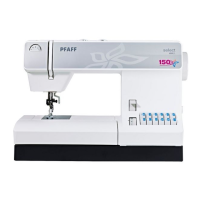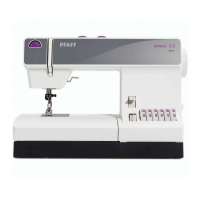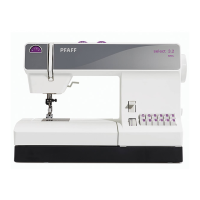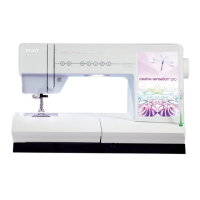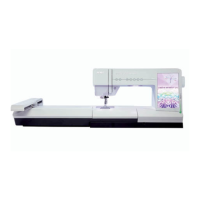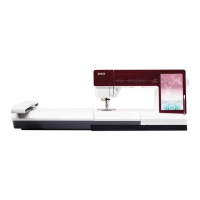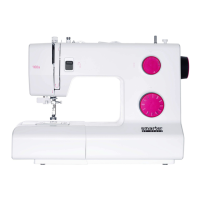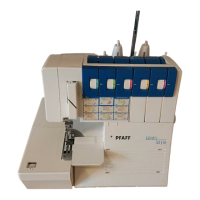23
A
B
Utility stitches and practical sewing
Needle thread tension
To ensure perfect sewing results, the needle
and bobbin thread tensions must be perfectly
tuned to each other . The normal setting for
utility stitches is in the range of 4-5.
Check the tension with a wide zigzag stitch.
The threads must be interlaced between the
two fabric pieces.
If the needle thread tension is too high the
threads are interlaced above the top fabric.
If the needle thread tension is too low, the
threads are interlaced below the lower fabric.
The adjustment of the needle thread tension is
described on page 15 and the bobbin thread
tension on page 8.
Topstitching
Straight stitch G (1540)/E (1530, 1520) can be
sewn using any of 15 various needle positions
in such a way that you can always guide the
sewing foot along the fabric edge for top-
stitching work. The top-stitch needle position is
determined by the needle position dial. If you
wish to top-stitch farther from the fabric edge,
simply guide the fabric along the guide marks
on the needle plate or use the edge guide
(standard accessory No.8). The edge guide is
inserted into hole A and is secured with fi xing
screw B.
Sewing aid for thick seams
To ensure a consistent feed when beginning
sewing at a thick seam, we recommend
supporting the presser foot on a piece of fabric
of the same height as the workpiece
Too high tension
Too low tension
Perfect tension
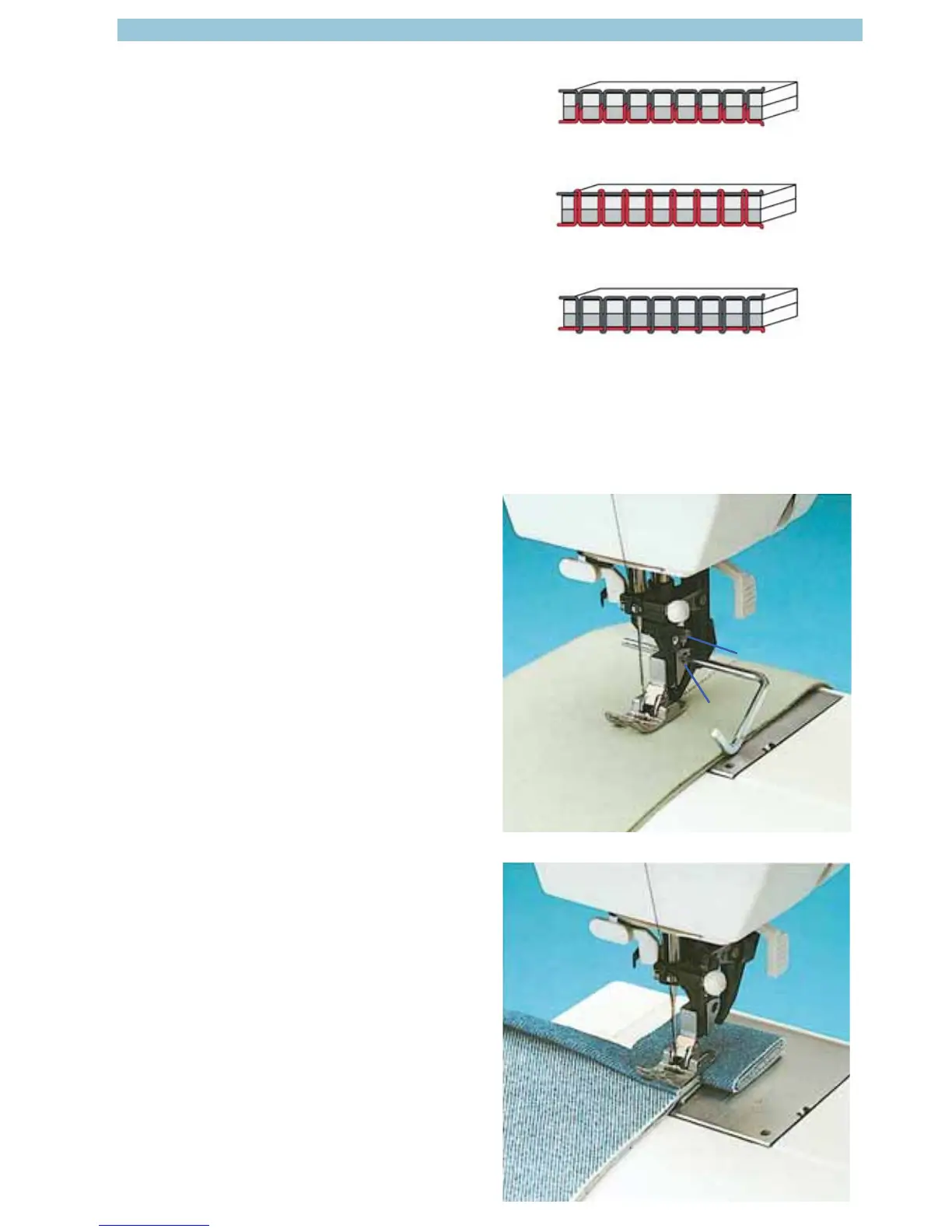